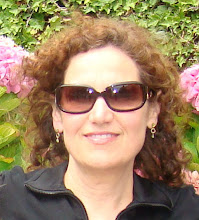

Cambodia is a wonderful place with beautiful people and an ugly history. The Hindu/Buddhist temple complex at Angkor is exhausting, physically and sensorily. These structures were built from about 1100 to 1300 by the Kings of Kampuchea as monuments to the Hindu deities. Later in the 13th - 14th centuries, Buddhism was adopted and some of the structures were modified to reflect that shift. They are made of volcanic rock and faced with sandstone. All the bas relief telling the stories of Krishna and the exploits of the kings are carved in the sandstone as are all the facing that gives the structures the three-dimensional faces of the gods, elephants, dragons, etc. Some of these giant complexes such as Ankor Wat (which was just the monastery for the entire city) were built in periods of ~50 years. The whole place was abondoned in the 1400s and forgotten about and overgrown until a French archeologist stumbled upon the broken down, overgrown temples in the mid 1800s, and began a rebuilding effort. One of the structures, where parts of Tomb Raider, were filmed, has been left in the overgrown condition so you can see the Spung trees (3-400 years old) growing on the tops of walls with the huge root systems hugging the walls on their way to the ground.
On day two in Siem Reap, the guide asked us if we wanted more temples or other aspects of the region. We chose the latter, and saw the Great Lake (Tonle Sap) ("the largest fresh water lake in the world" (I think he meant Cambodia)) which is fed by the Mekong river. People live on and around the lake, and have to move their floating houses 8 or 10 times per year to follow the water level as the lake expands during the monsoon and contracts now, in the dry season. These are very squalid little bamboo huts with typically one or two rooms, whether it floats in the water or is on stilts at the water's edge. I stopped to give a canal kid a LiveStrong bracelet and was swarmed with about 30 kids all wanting a bright yellow bracelet. The guide managed to get them to line up and I was able to hand them out one at a time.
Back to Siem Reap the guide, Soth, pronounced Rot, took us to the local monastery which was used by the Khmer Rouge as an interrogation and execution center between 1975 and 1979. He was very good at explaining the rise of Pol Pot, the role the Vietnamese played in '79, the methods used by the Khmer Rouge, the economic and political circumstances that gave rise to the holocaust. More than 1.5 million were killed outright in those 4 years, and another 2-3 million died of starvation during and after. The monastery had a shrine, a glass walled structure full of skulls and bones. It is amazing that these young people whose parents were probably teenagers during that period, are doing so well.
After that we went to the other part of Siem Reap (a small town, very dusty, noisy, geared for western tourists downtown) to a cultural crafts trade school where people from 18-25 learn one of many skills, wood carving, stone carving, silk weaving, lacquer, all beautiful, and made to sell all over the world as fair trade items. Spent lots of money in their gift shop.

Allen,
ReplyDeleteThat was vivid and beautiful! Thanks for bringing this part of the world to us!
Love,
Kathleen